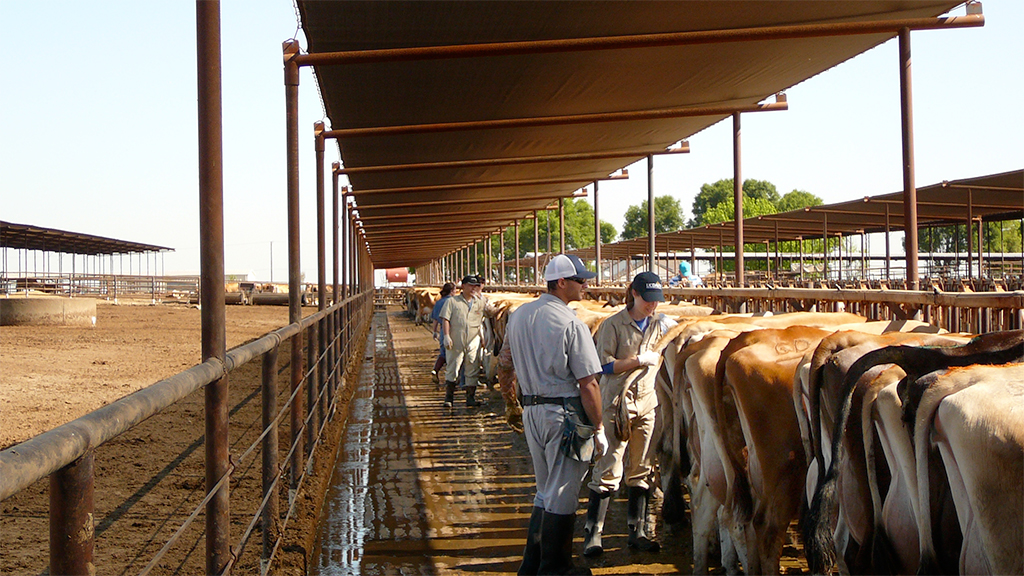 Senior Veterinary Students
Senior Veterinary Students
The Dairy Production Medicine Program (DPM) trains approximately 40 senior veterinary students per year.
- Students spend from 2 to 8 weeks in structured training programs focusing on dairy cattle reproduction, milk quality and udder health, calf health, nutrition, and preventive medicine.
- Total senior veterinary student clinical training averages over 125 student-weeks per year for the regular student training period from mid-August through mid-June.
Learning Objectives for Senior Rotations in Dairy Production Medicine
Download Senior Rotations in Dairy Production Medicine Learning Objectives (pdf)
The VMTRC is a leading educational and research organization for dairy production medicine and herd health that strives to provide relevant solutions for enhancing cow health and promoting productive and sustainable cattle herds that produce safe and wholesome products for feeding a hungry world.
Some important areas which the VMTRC focuses upon to enable clinical students to become veterinarians who can help the dairy farm become more profitable and sustainable:
- Animal Welfare: through on-farm visits and herd evaluations, understand the relationship between individual animal health, dairy management, dairy cattle caregivers, and the well-being of the herd.
- Disease management: surveillance, diagnostics (involving pathologists in the animal diagnostic laboratory), and disease prevention (vaccines, animal health/care, treatment). Treatment protocol development and oversight including drug list management.
- Herd Management: Herd health and biosecurity strategies that include effective labor management, training programs and improved facilities utilization.
- Milk Quality: Improved udder health, reduction of somatic cell count (SCC) through mastitis control and prevention, and milking management to achieve enhanced milk quality outcomes.
- Nutrition: Optimize dry matter intake and milk production through nutrition management and cow comfort. Nutritional management of growing heifers, replacement stock, dry cows and transition cows.
- On-farm food safety: Awareness and management of drug, chemical and microbiological hazards regarding food animal production agriculture and food safety issues.
- Reproduction: Improve reproductive efficiency of the herd. Decrease the age at first calving through heifer management programs.
The learning objectives described here for 4th-year veterinary students interested in modern food animal production medicine address all these areas.
The Rotation
This rotation has four overall goals:
- Provide dairy production medicine clinical settings where students can apply knowledge and techniques and participate in health and production medicine delivery systems.
- Provide exposure to contemporary dairy production and population medicine programs.
- Identify clinical laboratory and information resources useful in dairy production medicine programs and practice.
- Develop students’ ability to communicate with producers and farm employees in a production medicine environment.
Guide for desired learning outcomes for dairy production medicine clinical rotations (pdf)
Dairy Production Medicine Clinical Rotation Student Video
VMTRC Clinical Rotations
